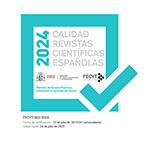Routine episiotomy as a cultural gender practice: other case of «female genital mutilation»
Abstract
In the first half of the 20th century, episiotomy became a routine procedure within the technocratic paradigm of childbirth care. Studies on its effectiveness began half a century later without clear evidence of its benefits. Today, it is still widely practiced in many countries, so several authors have considered it female genital mutilation. This article aims to deepen this assertion by analyzing its practice in relation to the social construction of gender and the institution of motherhood. The analysis, developed on the basis of bibliographic research, reveals episiotomy as a gender practice constitutive of modern patriarchy, whose genesis in the 18th century is framed around the elaboration of the dispositif of sexuality theory by Foucault. In addition, the double discourse that arises from its western legitimization situates it as a disciplinary technology of colonial and gender domination.
Downloads
Article download
License
In order to support the global exchange of knowledge, the journal Investigaciones Feministas is allowing unrestricted access to its content as from its publication in this electronic edition, and as such it is an open-access journal. The originals published in this journal are the property of the Complutense University of Madrid and any reproduction thereof in full or in part must cite the source. All content is distributed under a Creative Commons Attribution 4.0 use and distribution licence (CC BY 4.0). This circumstance must be expressly stated in these terms where necessary. You can view the summary and the complete legal text of the licence.











